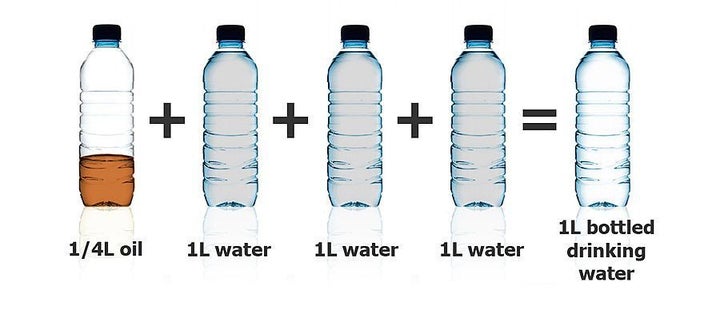
America has a dangerous and deadly addiction to plastic. If recent trends in New York State are any indication, it’s not going away anytime soon, thanks in part to multi-million-dollar lobbying by the plastic manufacturing industry. Yet the recent showdown over plastic bag fees in the Empire State shows the unwillingness of even climate-committed states to curb their plastics, and thus petroleum, consumption.
New York State had been on the front lines of state-based climate action, competing with California to cut emissions. Both states had committed to 50 percent renewable energy goals by 2030. But in shutting down New York City’s attempt to curtail consumption of single-use plastic bags and institute a simple 5-cent fee, New York State legislators showed a clear unwillingness to lead on sustainability.
Contrast this with California’s recently-instituted plastic bag ban, the nation’s first, which is now in full effect and shows a real commitment to greenhouse gas emissions reductions. New York’s consumption of plastics, meanwhile, continues apace and uncontrolled. New York City, for example, uses 10 billion single-use plastic bags and 1 billion plastic bottles every year. This can’t continue.
Plastics prevention, and the efforts above, have often been framed as a waste issue. It’s often couched as preventing plastics from ending up in our waterways. When Washington, D.C. instituted a 5-cent fee, the monies and messaging went to cleaning up the city’s Anacostia River. The fee was effective. In less than five years after the tax went into effect, plastic bag consumption in the nation’s capital dropped by fifty percent.
“In less than five years after the tax went into effect, plastic bag consumption in the nation’s capital dropped by fifty percent.”
This was a major flaw in New York City’s bag fee. It generated no revenue for the clean-up of the city’s Hudson River. The monies, instead, went to the businesses instituting the fee. Los Angeles also witnessed a similar reduction with its 10-cent bag tax. The city’s bag use dropped from 2.2 million per year to 125,000. In fact, many cities have banned plastic bags completely, including San Francisco, Austin, Chicago and Seattle, while regressive states like Michigan and South Carolina write bills to stop similar municipal bans on plastic.
There is no question that plastic waste is a huge problem, as University of Miami researchers indicated last month in a study that shows the shocking realities of our oceans’ garbage patches. In 2050, our oceans will have more plastic than fish, pound for pound. Already, eight million tons of new plastic end up in our seas every year. This puts our marine food system, which is a major source of protein for many developing nations, at serious risk. But even before our fish food becomes toxic and untenable as a food source, there is a bigger issue than waste at play: the oil and carbon dependency of these plastics.
The carbon footprint is formidable. Twelve million barrels of oil, for example, are needed to produce 30 billion plastic bags in the United States. And that’s just the plastic bags. Add another 17 million barrels of oil to produce America’s plastic bottles. When you factor in the full life cycle – which includes filling, sealing, labeling, refrigerating and transporting – the energy footprint is even greater.
Millions of tons of carbon dioxide are needed to prop up a totally preventable plastics addiction. And that’s not even counting the excessive plastic packaging in American supermarkets and big box stores. The production of plastics now accounts for 6 percent to 8 percent of all oil consumption globally, and in thirty years that number will rise to 20 percent. The water footprint is equally problematic: It takes 3 liters of water, for example, to produce just 1 liter of bottled water.
“Twelve million barrels of oil... are needed to produce 30 billion plastic bags in the United States. And that’s just the plastic bags.”
Americans think they’re being responsible by recycling, but recycling does little to keep this carbon and water footprint in check. Very little of this plastic is actually recycled. Every year, Americans discard an average of 33.6 million tons of plastic, and only a very small portion of that is recycled: 6.5 percent. Another 7.7 percent of American plastic is burned in waste-to-energy plants. Those remaining millions of tons of plastic end up in landfills, where they leak pollutants, or they end up inside our fish, our birds, and our bodies.
Until a price is put on petroleum, as several leading Republicans recommended last month, new plastic will continue to be the cheaper option for the private sector. A carbon tax could help curb the international community’s addiction to plastic consumption, as the 300 million tons of plastic produced globally every year is bound to increase. It’s time for plastic to reflect its true cost to society by putting a price on carbon.
Until we put that price on carbon, it’s all about consumer power. This is one heavy carbon emitter over which American citizens have near complete control. It’s up to Americans to choose tap water over bottled water. Not only does this lighten the per capita carbon footprint, but tap water is also the healthier and more cost-effective option since bottled water is far less regulated than tap and up to 2,000 times more expensive. Bottled water companies are frequently recalling their water due to E. Coli contamination and falsely representing their water source as mountain spring water (e.g. lawsuit against Nestle).
“Until a price is put on petroleum, as several leading Republicans recommended last month, new plastic will continue to be the cheaper option for the private sector.”
It’s also up to Americans to put pressure on local municipalities and local businesses to ban plastic. And the public health argument is one of the strongest arguments here. Plastics contain toxic chemicals that are harmful when heated, worn or pressured. It’s time to kick cancer-causing chemicals – such as polycarbonate, bisphenol A, polystyrene, styrene, polyvinyl chloride and vinyl chloride – to the curb. Over 200 municipalities have said they don’t want them in their communities and have banned one-time use plastic containers. It’s time for another 200 cities to join ranks.
This is the next phase of climate action and the potential is huge. Plastics aren’t just a waste problem, they’re a carbon problem. And unlike power plants, energy markets, and smart grids, it’s one Americans can directly control. It’s time to kick the habit.
Michael Shank, PhD, teaches sustainable development at NYU’s Center for Global Affairs.
